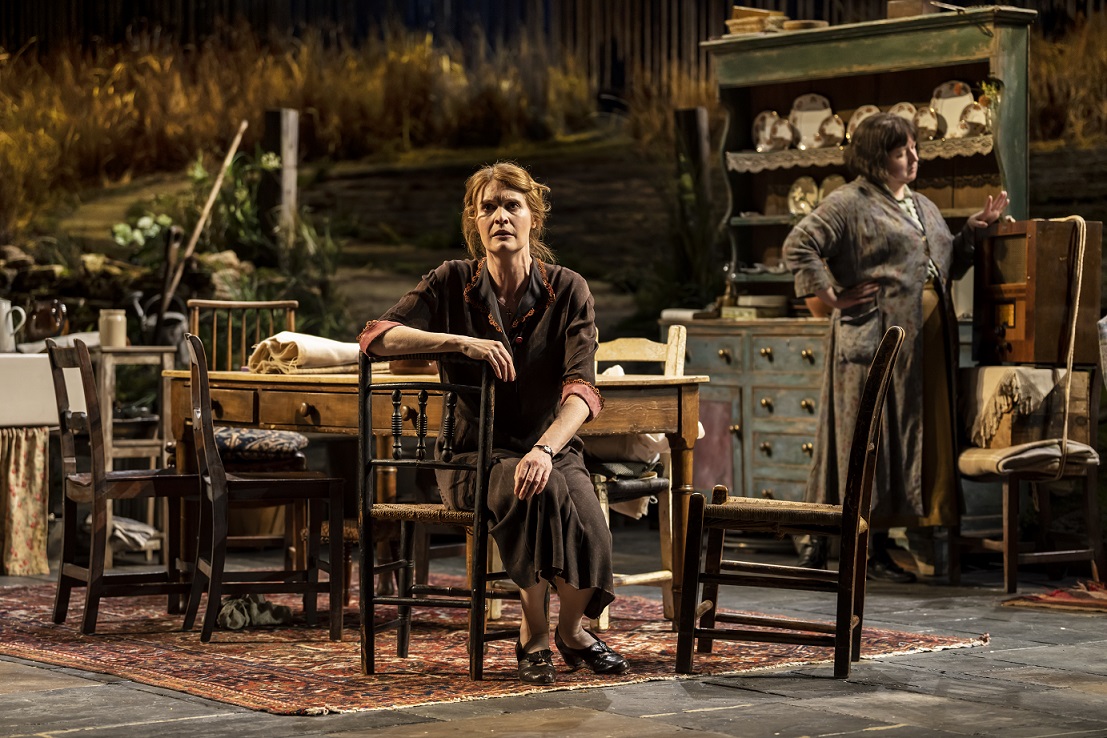Theatre is magic. One moment you’re walking across Waterloo Bridge to the National Theatre with vistas of modern architecture on either side and then, having found your seat for its production of Brian Friel’s “Dancing at Lughnasa”, an idyllic Irish scene places you in another dimension.

Sean Sheehan
The play has yet to begin and not a single actor has appeared but the stage has been set and, making full use of all wide space, a radiant, rural landscape takes you out of yourself: a pathway leads down a hillside to the interior of a cottage; projections of a shimmering mountain and blue sky form a gleaming backdrop.
The place is a village in Donegal, the time is 1936, and five unmarried sisters are about to have their lives unravelled.
With a dramatic economy that makes Brian Friel (1929-2015) one of Ireland’s greatest playwrights, their daily routines unfold amidst family concerns that become increasingly pressing.
One of the sisters has a seven-year-old boy ˗ kissed and spoken to by adoring aunts but invisible on the stage ˗ and his memories of that time and what happened are voiced by the actor playing the child’s older self. It’s wonderful stagecraft, weaving the past and present into an evocative narrative that frames the sisters’ poignant experiences.

The sisters’ older brother, Father Jack, has returned from Uganda where he had been a priest for many years. He has been sent home ˗ though he is unaware of this ˗ for ‘going native’ and finding Uganda’s non-Christian culture more spiritual and congenial than the Catholicism he was supposed to represent. Another new visitor to the cottage is the very likable father of the young boy, making an unexpected appearance but proving to be too much of a fantasist to be of much use to the mother of his son.
It is harvest time and vestiges of pagan ceremonies celebrating a Celtic deity, ˗ Lugh; hence Lughnasa ˗ have survived in the wilder parts of the Donegal countryside. A spirit of freedom attaches itself to these reminders of a pre-Christian Ireland and the sisters experience it themselves when they anarchically flaunt with the idea of attending a local dance and break spontaneously into an ecstatically joyful dance.
Hegel’s remark about the owl of Minerva flying only at dusk points to the way wisdom can only work in the mode of retrospection. Only by looking back, after something has happened, do we come to understand what it meant.

Libidinal longings disturb the female household’s fragile equilibrium and in the course of this superbly produced drama, vulnerabilities are exposed, Catholicism and patriarchy crush desire and change becomes a threat. The anguish of it all is tenderly recollected by the adult son and his heartache comes to be shared by the audience. In the end, only memories are what everyone has and, thanks to luminous performances, choreographing and direction, this and other meanings layered within the play gradually come to the surface.
“Dancing at Lughnasa” is on at The National Theatre.
(Images provided by the National Theatre)












.jpg)












